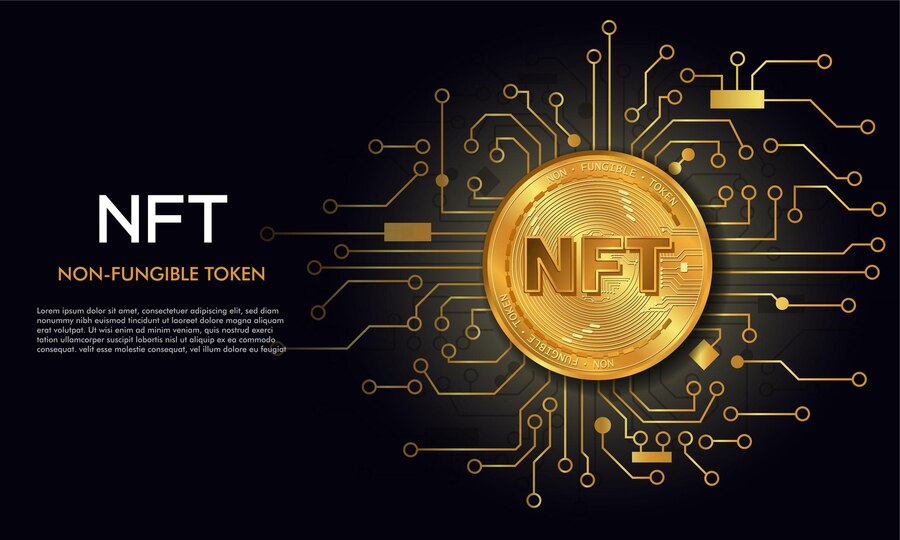BREAKING NEWS
Shiba Inu (SHIB) Becomes Fourth Most Traded Cryptocurrency

Shiba Inu (SHIB), originally conceived as a meme cryptocurrency, has achieved the distinction of becoming the fourth most traded cryptocurrency globally, as reported by CoinGecko data. This development reflects a significant milestone for SHIB, signaling its growing popularity among investors and traders.
Notably, the SHIB/USDT trading pair has secured the position of the second most-traded cryptocurrency pair on Binance, trailing only behind the dominant BTC/USDT pair. In the past seven days alone, Shiba Inu has demonstrated a remarkable comeback, witnessing a substantial surge of 111%, according to CoinGecko data.
Top Coins by Trading Volume
The current trading volume leaderboard features Tether (USDT) maintaining its top position with an impressive $52.8 billion in trades. Despite facing controversies, Tether remains the preferred stablecoin for cryptocurrency traders, boasting a massive market capitalization of approximately $100 billion. Following Tether, Bitcoin (BTC) and Ethereum (ETH) occupy the second and third positions, with $22.1 billion and $12.7 billion in trading volume, respectively.
Shiba Inu (SHIB) has secured a trading volume of $5.7 billion, a testament to its surging popularity and increasing investor interest. It has surpassed other notable cryptocurrencies such as USDC, Bitcoin Cash (BCH), Dogecoin (DOGE), and Solana (SOL).
Talk of the Town
Social media discussions and buzz surrounding Shiba Inu have reached unprecedented levels, with data from LunarCrush indicating a surge of over 1,520.6% in social interactions concerning SHIB over the last month. This surge has been attributed to what is being referred to as the “meme season.”
However, amid the enthusiastic atmosphere, it is crucial to note that SHIB is still down by 76% from its all-time high. The popular meme cryptocurrency reached its peak in late October 2021.
This remarkable ascent in trading volume and social media interactions underlines Shiba Inu’s current standing in the cryptocurrency market, even as investors remain mindful of its historical price fluctuations.
Disclaimer: Cryptocurrency investments carry inherent risks, and individuals should conduct thorough research and exercise caution before making investment decisions. All trading volume and price data mentioned are based on available information at the time of writing.
Cryptocurrency
Bitcoin Halving May Arrive Sooner Than Expected
The Bitcoin halving, a highly anticipated event occurring approximately every four years, is drawing closer. Originally expected around April 28, 2024, the halving is now projected to take place on April 15, 2024. This shift is attributed to a surge in Bitcoin’s price, leading to increased mining activity and a rise in network computational power, known as the “hashrate.”
Mining Power Surge
- Increased Hashrate: Mining companies are capitalizing on the bullish trends in the market by deploying new, more powerful rigs and reactivating older machines. This surge in mining activity has accelerated the creation of new blocks on the Bitcoin blockchain.
- Historical Precedent: Similar dynamics were observed in the lead-up to the previous halving event four years ago. As Bitcoin’s price rises, the rewards for mining become more lucrative, incentivizing miners to expand their operations and enhance their computational power.
Halving Dynamics
- Impending Halving: The upcoming halving, scheduled to reduce block rewards from 6.25 BTC to 3.125 BTC, is considered a significant event in the cryptocurrency world. It is expected to occur around April 15, 2024, according to Nicehash’s countdown.
- Impact on Bitcoin Price: The halving is often viewed as a catalyst for bull runs in the Bitcoin price. With fewer new bitcoins being created, coupled with increasing demand, existing bitcoins become more valuable. This scarcity typically drives up the price of Bitcoin.
Mining Equipment Trends
- Newer Equipment: Mining companies are deploying advanced mining machines, such as Antminer’s S21 series, which offer significantly higher hash rates compared to previous models. The shift to more powerful equipment is aimed at maximizing mining efficiency and profitability.
- Reactivation of Older Machines: In addition to deploying new equipment, some mining firms are reactivating older machines to capitalize on the current high prices of Bitcoin. This strategy allows miners to optimize their mining fleets and extract maximum hash power.
Conclusion
As the Bitcoin halving approaches, the cryptocurrency market is experiencing heightened activity and anticipation. The convergence of factors such as increased mining power, rising Bitcoin prices, and impending scarcity due to the halving creates an environment of excitement and uncertainty. Market participants are closely monitoring developments, preparing for potential price movements, and strategizing their investments accordingly.
BREAKING NEWS
Bitcoin Halving: Predictions and Summary

The Bitcoin halving, scheduled for around April 20, 2024, is an event anticipated by investors and analysts worldwide. This event, occurring approximately every four years, has historically influenced Bitcoin’s supply dynamics and price trajectory. As the halving approaches, market participants are assessing predictions and preparing for potential market movements.
Key Points
- Halving Mechanics: The Bitcoin halving reduces mining rewards by half approximately every 210,000 blocks. This time, rewards will decrease from 6.25 to 3.125 bitcoins per block.
- Unique Factors: This will be the fourth halving in Bitcoin’s history. Notably, it follows the recent launch of Bitcoin ETFs approved by the Securities and Exchange Commission in January 2024. Additionally, Bitcoin’s unprecedented surge to new all-time highs adds a unique element to this halving event.
- Short-term Predictions: Analysts anticipate short-term price fluctuations, with some predicting a potential drawdown of up to 20%. However, there is uncertainty surrounding immediate post-halving movements due to the unprecedented market conditions.
- Long-term Outlook: Despite short-term uncertainties, analysts remain bullish on Bitcoin’s long-term prospects. Factors such as scarcity and increasing institutional adoption are expected to drive Bitcoin’s value over time.
Market Predictions
| Analyst | Prediction |
|---|---|
| JPMorgan | Potential price dip to $42,000 post-halving |
| Standard Chartered | Price target of $150,000 by end of 2024 |
| Binance CEO | Potential surpassing of $80,000 by year-end |
Summary
As the Bitcoin halving approaches, market participants are closely monitoring predictions and preparing for potential market movements. While short-term fluctuations are anticipated, the long-term outlook for Bitcoin remains positive. Investors should stay informed, assess their risk tolerance, and adjust their investment strategies accordingly in light of the upcoming halving event.
BREAKING NEWS
Bitcoin Halving History Chart Analysed

Bitcoin halving events occur approximately every four years, reducing the rate of new bitcoins entering circulation by half. These events have significant implications for the cryptocurrency market, influencing supply dynamics and potentially impacting prices. Understanding the history of Bitcoin halving events through visual representations such as the Bitcoin Halving History Chart can provide insights into market trends and investor behavior.
What is Bitcoin Halving History Chart?
The Bitcoin Halving History Chart visually depicts the chronological sequence of halving occurrences and their influence on the market. It typically includes dates of halving events, changes in mining rewards, and Bitcoin price fluctuations over time. Analyzing this chart can help investors comprehend Bitcoin’s cyclical supply patterns and anticipate market reactions.
Bitcoin Halving Events
First Halving – November 28, 2012
The inaugural Bitcoin halving occurred after the network verified 210,000 blocks. Miners saw their rewards reduced from 50 to 25 bitcoins per block. Despite uncertainties, Bitcoin’s price surged from $12.20 to $1,000 by the end of 2013.
Second Halving – July 9, 2016
Four years later, the second halving occurred after 420,000 blocks were processed. Mining rewards decreased from 25 to 12.5 bitcoins per block. Bitcoin’s price experienced fluctuations before rallying to around $19,188 in December 2017.
Third Halving – May 11, 2020
The third halving event took place following the processing of 630,000 blocks. Rewards were halved from 12.5 to 6.25 bitcoins per block. Bitcoin’s price surged from $8,821.42 to an all-time high of $69,000 in November 2021.
Upcoming Fourth Halving – 2024
The fourth halving is projected to occur after 840,000 blocks, with an estimated date of April 17, 2024. Miners anticipate a further reduction in rewards from 6.25 to 3.125 bitcoins per block. Speculation abounds regarding the potential market impact of this event.
Anticipated Impact of Fourth Halving
Experts speculate that the upcoming halving could differ from previous ones due to the introduction of spot Bitcoin ETFs. These ETFs facilitate broader access to Bitcoin, potentially increasing mainstream adoption. The approval of US spot Bitcoin ETFs resulted in significant net flows, potentially counterbalancing post-halving sell pressure and fundamentally transforming Bitcoin’s market structure.
Conclusion
Bitcoin halving events historically coincide with increases in Bitcoin’s value, albeit with variations in magnitude and timing. The reduction in supply resulting from halving events often triggers a bullish market response. However, numerous factors, including market sentiment and global economic conditions, can influence the precise outcome. Understanding Bitcoin’s halving history and its potential implications is crucial for informed investment decisions in the cryptocurrency market.
-

 ECONOMY2 years ago
ECONOMY2 years agoNew York’s Hidden Gems: Uncovering the City’s Best-Kept Secrets!
-

 ECONOMY2 years ago
ECONOMY2 years agoThe Role of Technology in Driving Innovation in the US Economy
-

 BREAKING NEWS1 year ago
BREAKING NEWS1 year agoBitcoin Halving History Chart Analysed
-

 TECH2 years ago
TECH2 years agoFuturistic Vision: How Technology Will Transform Our Future
-

 TECH2 years ago
TECH2 years agoInnovation Hub: USA’s Leading Industries and Technological Advancements
-

 NEW YORK2 years ago
NEW YORK2 years agoBeyond Manhattan: Exploring the Hidden Charms of New York’s Boroughs!
-

 NEW YORK2 years ago
NEW YORK2 years agoThe Iconic Landmarks of New York
-

 BREAKING NEWS2 years ago
BREAKING NEWS2 years agoThe Gender Pay Gap: America’s Shameful Reality


